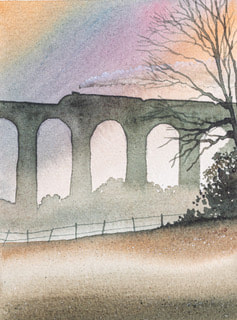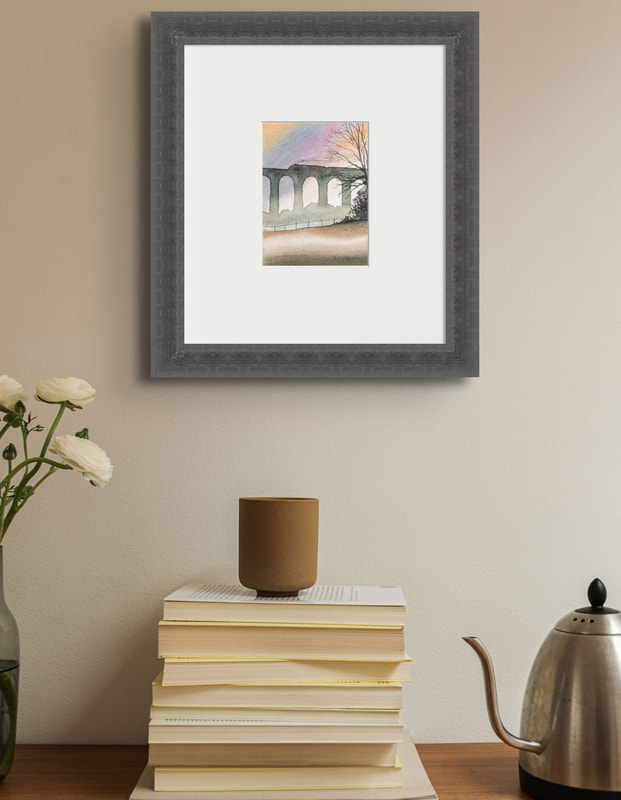Welwyn Viaduct by Ian Scott Massie
Original Watercolour
12" x 10" Mounted size - 7" x 5" Image size
Available: unframed @ £215
To shop, please click here
12" x 10" Mounted size - 7" x 5" Image size
Available: unframed @ £215
To shop, please click here
WELWYN GARDEN CITY
I grew up on a council estate at Langley, Buckinghamshire. It was laid out with wide green spaces, with trees preserved where possible, with limited access for traffic to its quiet roads and with front and back gardens for every house. It was a direct descendant of the work of a brilliant man whose greatest creation sits by the route of the Flying Scotsman.
Sir Ebenezer Howard, a visionary Victorian urban planner, wrote a book in 1898: To-Morrow: A Peaceful Path to Real Reform about a new kind of town, where the best of town and country come together. He wanted industry kept away from housing, well-designed houses with generous gardens and open spaces with an abundance of trees.
The uncontrolled urban growth of the industrial revolution created disease-ridden streets of poorly-built houses. Howard wanted to establish a better way of urban living. His first project was Letchworth Garden City where only one tree was felled in its creation.
The town was a success, attracting attention and influencing new council house design. Further afield it inspired projects in Germany, Finland, Russia and the Australian capital, Canberra. Wishing to develop his ideas further, in 1919 Howard bought land in Hertfordshire and began building Welwyn Garden City.
The town is laid out around a central road: Parkway, and wide grass verges and tree-lined avenues give it an open feeling. Welwyn has its own environmental protection scheme and the houses, shops and green spaces belong not to individuals, but to the district council. Personally I don’t think we’ve ever surpassed the Garden City design as an urban planning model
Welwyn Garden City continues to influence town planning a century after its creation.
Sir Ebenezer Howard, a visionary Victorian urban planner, wrote a book in 1898: To-Morrow: A Peaceful Path to Real Reform about a new kind of town, where the best of town and country come together. He wanted industry kept away from housing, well-designed houses with generous gardens and open spaces with an abundance of trees.
The uncontrolled urban growth of the industrial revolution created disease-ridden streets of poorly-built houses. Howard wanted to establish a better way of urban living. His first project was Letchworth Garden City where only one tree was felled in its creation.
The town was a success, attracting attention and influencing new council house design. Further afield it inspired projects in Germany, Finland, Russia and the Australian capital, Canberra. Wishing to develop his ideas further, in 1919 Howard bought land in Hertfordshire and began building Welwyn Garden City.
The town is laid out around a central road: Parkway, and wide grass verges and tree-lined avenues give it an open feeling. Welwyn has its own environmental protection scheme and the houses, shops and green spaces belong not to individuals, but to the district council. Personally I don’t think we’ve ever surpassed the Garden City design as an urban planning model
Welwyn Garden City continues to influence town planning a century after its creation.





